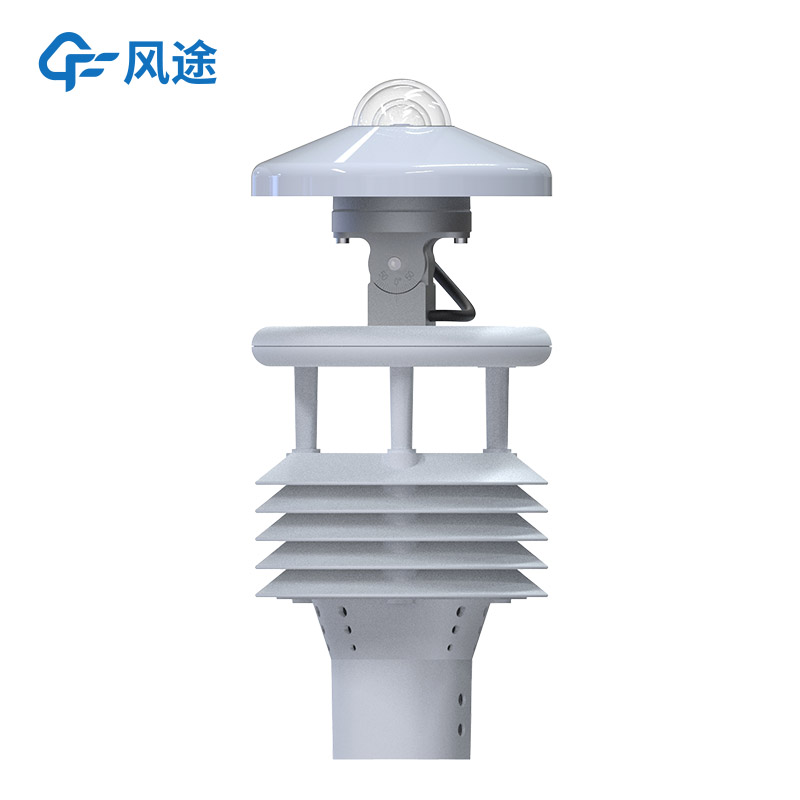Tianqiong Sensor IOT Technology Co., Ltd
Sales Manager:Ms. Emily Wang
Cel,Whatsapp,Wechat:+86 15898932201
Email:info@fengtutec.com
Add:No. 155 Optoelectronic Industry Accelerator, Gaoxin District, Weifang, Shandong, China

Sales Manager:Ms. Emily Wang
Cel,Whatsapp,Wechat:+86 15898932201
Email:info@fengtutec.com
Add:No. 155 Optoelectronic Industry Accelerator, Gaoxin District, Weifang, Shandong, China

Model:FT-WQX8B
Brand:tianqiong
1.Introduction to Environmental monitoring solutions for PV Systems
Environmental monitoring solutions for PV Systems evaluate the performance of renewable energy sites by monitoring ambient temperature, total thermal radiation, total daily cumulative radiation, and module temperature.As an enterprise specializing in the research, development, production and sales of micro meteoroscopes, our company has been committed to the promotion and application of micro meteoroscopes and meteorological environment solutions.With a complete production chain, strong technical team and comprehensive marketing team, we have developed and produced meteorological products such as ultrasonic wind speed wind meter, five-element micrometeoroscope, six-element micrometeoroscope and small automatic weather station, which have been widely used in In the fields of photovoltaic power generation, meteorological monitoring, urban environmental monitoring, wind power generation, navigation and ships, aviation airports, bridges and tunnels, customers are spread all over the country and have achieved good social and economic benefits.
Compared with traditional micro meteoroscopes, our products overcome the demand for high-precision timers and avoid inaccurate measurement problems caused by sensor startup delay, demodulation circuit delay, and temperature changes.
The WQX8B type eight-element micrometeoroscope innovatively uses wind speed, wind direction, temperature, humidity, air pressure, total thermal and electrical radiation, total daily cumulative radiation, component temperature (backplane temperature) through a high-integration structure, which can be realized.Outdoor meteorological parameters are continuously monitored 24 hours a day, and eight parameters are output to users at one time through the digital communication interface.
2.Environmental monitoring solutions for PV Systems product features
1.The hidden ultrasonic probe on the roof cover can avoid interference from rain and snow accumulation and avoid natural wind shading
2.The principle is to transmit a continuous frequency conversion ultrasonic signal, and to detect the wind speed and direction by measuring the relative phase.
3.The total thermal radiation is integrated on the top of the micro meteoroscope, and the angle is adjustable from 0-50°.
4.The back plate temperature is connected in parallel with the micro meteoroscope through the 6-hole expansion box, which is convenient for customers to install and debug on-site.
5.Adopt advanced sensing technology, real-time measurement, no starting wind speed☆
6.Strong anti-interference ability, with watchdog circuit, automatic reset function, ensuring stable operation of the system
7.High integration, no moving parts, zero wear
8.Maintenance-free, no on-site calibration required
9.Use ASA engineering plastics for outdoor applications without changing color all year round
10.The output signal of the product design is standard as RS485 communication interface (MODBUS protocol); optional 232, USB, and Ethernet interfaces, supporting real-time data reading☆
11.Optional wireless transmission module, minimum transmission interval of 1 minute
12.The probe is snap-on, which solves the problem of inaccurate loose transportation and installation process☆
3.Environmental monitoring solutions for PV Systems technical parameters
1.Wind speed: measurement principle ultrasonic wave, 0~60m/s (±0.1m/s+0.01V) resolution 0.01m/s;
2.Wind direction: measurement principle ultrasonic wave, 0~360° (±2°); resolution: 1°;
3.Air temperature: measurement principle diode junction voltage method, -40-80℃ (±0.3℃ (25℃)), resolution 0.01℃;
4.Air humidity: measurement principle capacitive type, 0-100%RH (±3%RH (20%~80%)), resolution: 0.01%RH;
5.Atmospheric pressure: measurement principle piezoresistive type, 300-1100hpa (±0.25%), resolution 0.1hpa;
6.Total thermoelectric radiation: measurement principle: thermocouple temperature difference generation, 0-2000W/m² (≤±3.1%), resolution 0.1W/m²
7.Total daily cumulative radiation: 0-65535W.h/m², resolution 1W.h/m²
8.Component temperature (backboard temperature): measurement principle thermistor, -50-100℃ (±0.5℃), resolution 0.1℃
9.Power consumption: 0.8W
10.The manufacturer has ISO quality management system, environmental management system and occupational health management system certification☆
11.The manufacturer has a computer software registration certificate☆
12.The manufacturer is a 3A-level credit enterprise☆
4.Environmental monitoring solutions for PV Systems product wiring definition
| definition | Remark | |
| VCC | Power supply | DC12V |
| GND | Power ground | |
| 485A | RS485A | |
| 485B | RS485B |
With the increasing demand for ecological protection and sustainable development in modern agriculture, the environmental pollution and pest resistance caused by the overuse of traditional chemical pesticides urgently need to be addressed. Physical pest control methods have gradually become an impor...
Meteorological Instruments for Solar Energy is a professional device that integrates the monitoring functions of six key meteorological parameters: temperature, humidity, wind speed, wind direction, air pressure, and rainfall. Its core highlight lies in its highly integrated and ingenious design. It...
The Ultrasonic weather station integrates various sensors with different functions, such as sensors for measuring wind speed and direction, sensors for detecting temperature and humidity, and sensors for recording rainfall, etc., all in the same device. This design makes the structure of the weather...
Two - dimensional ultrasonic anemometers can only measure two parameters: wind speed and direction on the horizontal plane. They cannot obtain information about the wind in the vertical direction, such as vertical wind speed or the upward/downward speed of vertical airflows. Therefore, they are only...